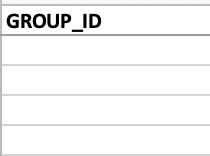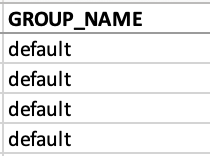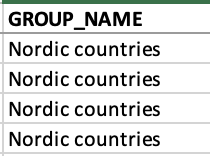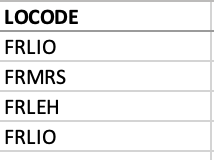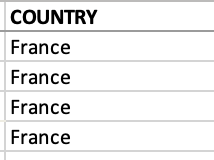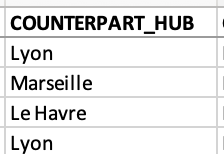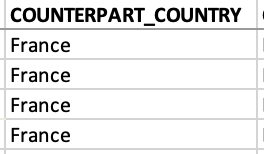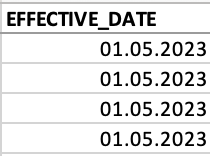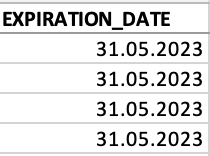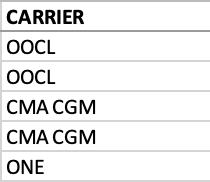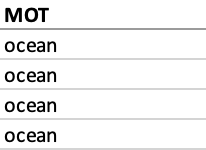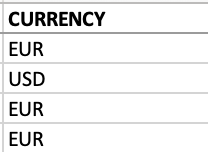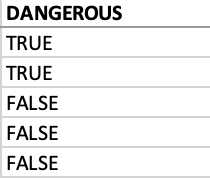Guide to upload Local Charges Pricing template
Our platform is designed to work seamlessly with properly formatted sheets, and our support team is always available to assist you in ensuring that your data is correctly structured for optimal performance.
Here is your Local charges' template local+charges+template.xlsx. The fields in each cell are represented horizontally in the Excel sheets. The description of these fields can be found in the table below. This will greatly assist you in understanding and smoothly filling your pricing template.
Column Header | Description | How to fill in the Excel sheet? |
Group_ID | Upon downloading, you will be provided with a unique ID consisting of a string of letters and numbers, which will be associated with the respective group name. | This field can be left blank, requiring no input of letters or numbers.
|
Group_Name | Groups can be created within the workplace. When applying the rate to a particular group, it is essential that the group name directly corresponds with the applied rate. | Please refer to the following examples when filling out this field, allowing them to serve as helpful guidelines.
Example 1: Default (all rates are applied to a generic group called "Default").
Example 2: Nordic countries (if you have created a group called ‘Nordic countries’ specifically for customers located in these regions).
Example 3: Special Tariff (if you are offering a special rate to a specific group of customers, please fill the column with the name "Special Tariff").
|
Hub | HUB - "A hub is the “main transhipment base” in the logistics chain. It is a place where consignments are collected, sorted and reloaded" - example "Lyon" | Please refer to the following examples when filling out this field.
|
Locode | Indicates the United Nation's LOCODE for the respective hub | Please refer to the following examples when filling out this field.
|
Country | Indicates the name of the country of origin | Please refer to the following examples when filling out this field.
|
Counterpart_Locode | Indicates the Locode of the destination hub | Please refer to the following examples when filling out this field.
|
Counterpart_Hub | HUB - "A hub is the “main transhipment base” in the logistics chain. It is a place where consignments are collected, sorted and reloaded" - example "hamburg" | Please refer to the following examples when filling out this field.
|
Counterpart_Country | Indicates the name of the country of destination | Please refer to the following examples when filling out this field.
|
Effective Date | Indicates the effective start date of the rate or the validity date. | Please fill it in using a long date format. Applicable formats include YYYY-MM-DD, DD.MM.YYYY, DD-MM-YYYY.
|
Expiration Date | Indicates the expiration date or end date of the rate validity.
| Please fill it in using a long date format. Applicable formats include YYYY-MM-DD, DD.MM.YYYY, DD-MM-YYYY.
|
Service_Level | Indicates the option to distinguish the rates from other rates by selecting a specific service level. | Please refer to any of the following examples when filling out this field, allowing them to serve as helpful guidelines.
Option 1: Standard
Option 2: Priority
Note: This cell can also be left blank. |
Carrier | Indicates the name of the shipping line, airline, or trains depending on the MOT (Mode of transport) being used. | Please refer to the following examples when filling out this field, allowing them to serve as helpful guidelines.
Note: Cell contents can also be left blank. |
Fee_Code | Indicates the fee code of the rate | Please refer to any of the following examples when filling out this field.
|
Fee | Indicates the fee name of the rate | Please refer to any of the following examples when filling out this field.
|
MOT | MOT (Mode of transportation) associated with the rates | Please use any of the following MOT that are supported by our system
I-e, Ocean, Air, Rail |
Load_Type | Indicates the categorization or classification of cargo or freight based on its characteristics and handling requirements | Please refer to any of the following examples when filling out this field, allowing them to serve as helpful guidelines.
Option 1: LCL Option 2: FCL
Our system has the availability of these load types fcl_10, fcl_20, fcl_40, fcl_45, fcl_40_hq, fcl_45_hq, fcl_20_ot, fcl_40_ot, fcl_20_rf, fcl_40_rf |
Direction | Indicates if the shipment is an import or export | Please refer to any of the following examples when filling out this field.
|
Currency | Indicates currency in the three-letter acronym capitalized. | Please refer to any of the following examples when filling out this field.
|
Rate_Basis | refers to the factors or criteria that are used to calculate the cost of shipping goods. It's the method or basis on which freight rates are determined. These factors can include things like the weight of the goods, the volume they occupy, the distance they need to travel, or the type and size of the shipping container. The rate basis helps determine how much you'll need to pay for shipping services based on these factors. | The pricing engine of the IMC platform is built off of many different rate calculations. All fees associated with making a quote have many different methods of measurement in which they should be applied. Here are the list of pricing rate basis, broken down per what rates are available per IMC template.
|
Range_Min | Indicates the minimum distance range to which the rate is applicable. | Please refer to any of the following examples when filling out this field, allowing them to serve as helpful guidelines.
|
Range_Max | Indicates the maximum distance range to which the rate is applicable. | Please refer to any of the following examples when filling out this field, allowing them to serve as helpful guidelines.
|
Dangerous | “dangerous” are substances or articles that possess inherent properties or characteristics that can pose a risk to health, safety, property, or the environment. | Please refer to any of the following examples when filling out this field.
|

